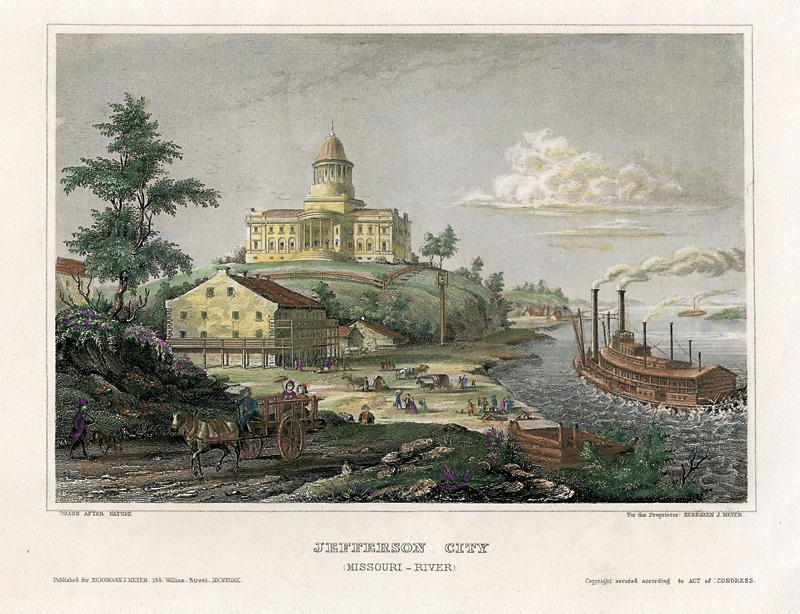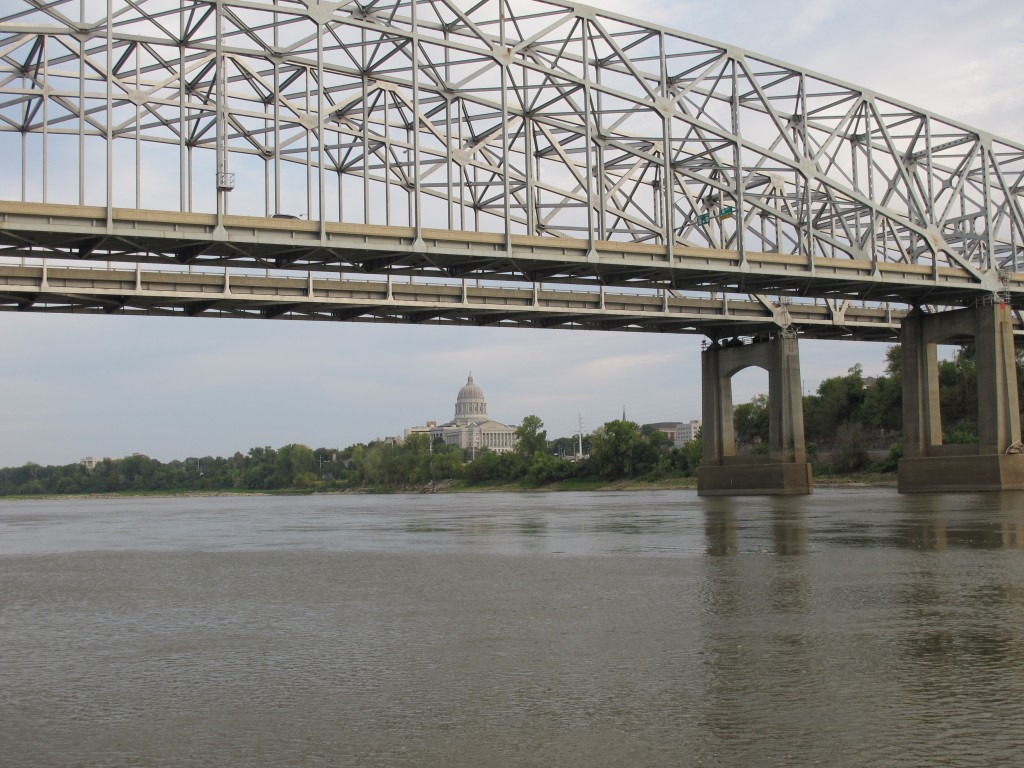The Osage River runs a course of about 500 miles from the Flint Hills of north central Kansas to Bonnot’s Mill in central Missouri where it joins the Missouri River. A fecundate prairie stream that cuts into the Ozark uplift in mid-Missouri, the Osage is rich with human history.  One little remembered piece of history involves the site selection for the state’s capitol of governance.
Why is Jefferson City, a modest town in central part of the state on a bluff overlooking the Missouri River, the capitol of Missouri? Why not a larger, more commercial, more populated urban setting?
Steel engraving of Missouri’s second capitol from an 1852 Meyers’ Universum, published in Germany. (and page 292, Damming the Osage)
The answer to that question is found in the 1820 constitution of the soon-to-be-state of Missouri. At that time, rivers were the highways of the frontier—rutted lanes were the closest thing to a surface road and they were scarce; railroads were not even a gleam in a developer’s eye. Waterways carried the freight and passengers pushing west.  Rivers were “…common highways, and forever free to the citizens of this state and of the United States, without any tax, duty, impost, or toll, therefor, imposed by the state.â€
The Mississippi and Missouri were the continental pathways; the tributary Osage carried fur traders to their Indian suppliers, and later carried steamboats with settlers and supplies to communities established along its banks. Under Article X, “Of the Permanent Seat of Governmentâ€, the General Assembly was directed to name five commissioners from different part of the state to select a site for the state capitol. The primary limitation for selection was “that no place shall be selected which is not situated on the bank of the Missouri river, and within forty miles of the mouth of the river Osage.â€
US Highways 63 and 54 cross the Missouri River at Jefferson City, just west of the capitol.
First railroads, then highways co-opted commercial river transportation.
First railroads, then highways co-opted commercial river transportation.
The Osage at times runs a large quantity of water. Its access to western Missouri would have made it a good conduit not only to western Missouri and eastern Kansas, but an avenue to a jumping-off place for overland travel to Santa Fe and the southwest.
Missouri’s capitol, named for Thomas Jefferson, only 18 (more or less) miles from the original mouth of the Osage, was incorporated in 1821.
Although the Osage Indians and French fur traders and early American officials knew it was seasonally unreliable for boat travel (from canoes to steamboats), business interests ignored its hydrologic realities and pushed for river improvements. Before the Corps of Engineers spent hundreds of millions of dollars on multipurpose dams of questionable usefulness in the Osage valley, they wasted hundreds of thousands of dollars on “improving†the Osage for steamboat travel.
OSAGE RIVER and the Missouri State Capitol




